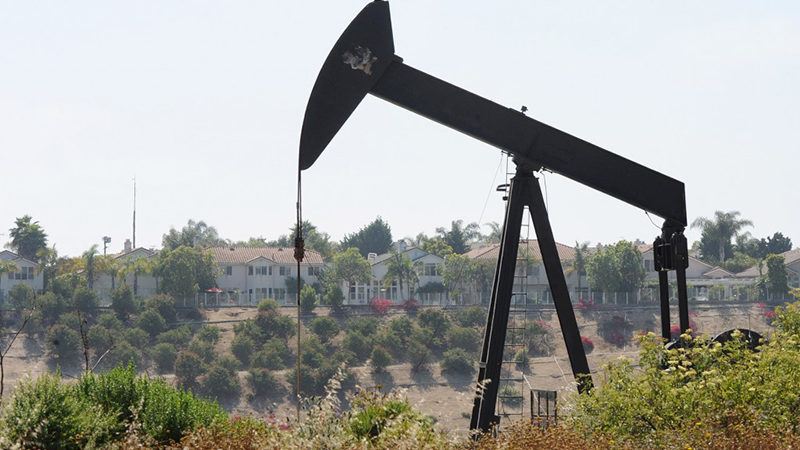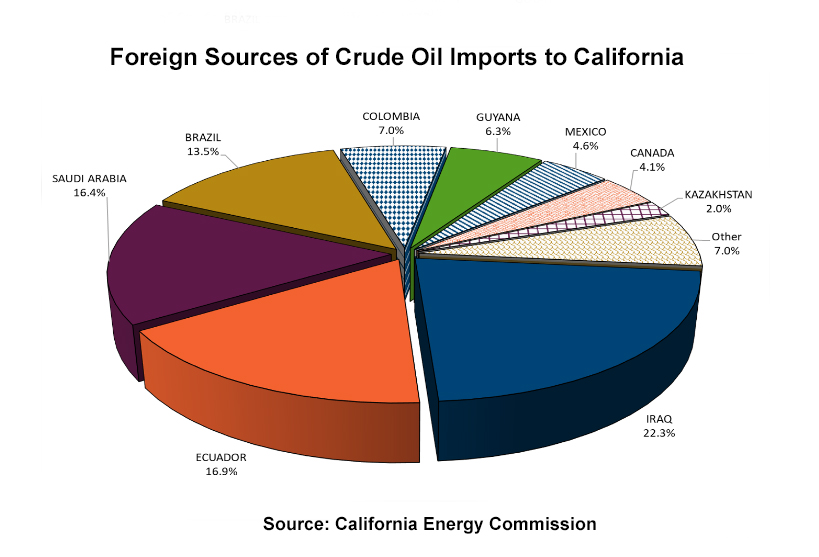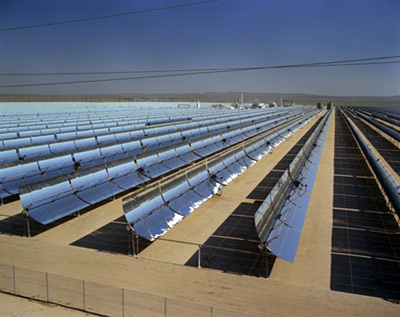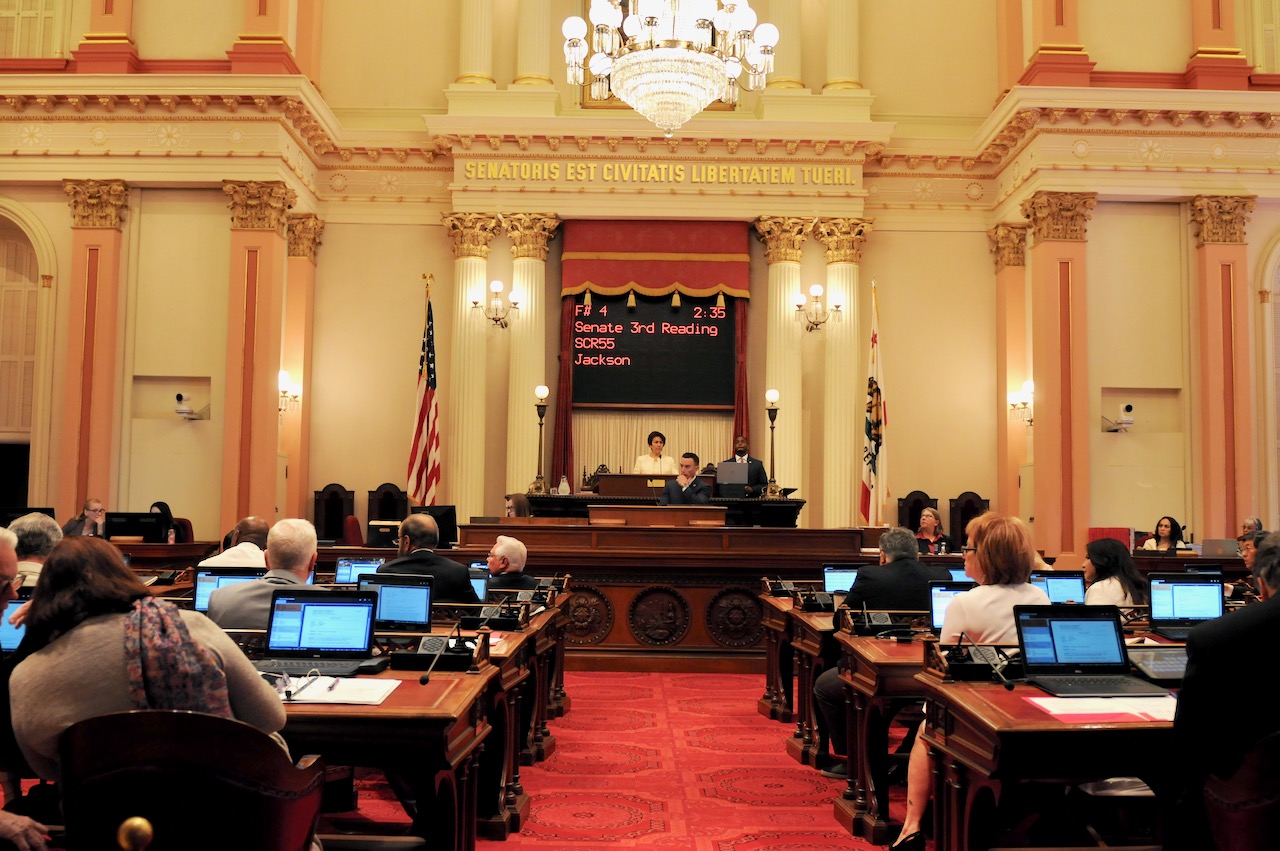
Oil pumpjack in Inglewood (Photo: ioes.ucla.edu)
Ringside: Half of California’s Energy Comes from Crude Oil
We have created a regulatory environment in California where it is nearly impossible to dig, drill, develop, mine, log, graze grow, or manufacture anything
By Edward Ring, January 25, 2024 6:15 am
 Here’s a reality check that ought to keep politicians up at night in California. Despite being a sunny, solar friendly state, with ample areas blessed with high wind, California still derives 50 percent of its total energy from crude oil. Another 34 percent comes from natural gas. This fossil fuel total for California energy, 84 percent, actually exceeds the world average for 2022, which – including coal – came in at 82 percent.
Here’s a reality check that ought to keep politicians up at night in California. Despite being a sunny, solar friendly state, with ample areas blessed with high wind, California still derives 50 percent of its total energy from crude oil. Another 34 percent comes from natural gas. This fossil fuel total for California energy, 84 percent, actually exceeds the world average for 2022, which – including coal – came in at 82 percent.
These figures come from the U.S. Energy Information Administration report “California Energy Consumption Estimates – Consumption by Source” for 2021, which is the most recent year for which data is posted.
To verify this data, which was mildly surprising, I turned to a separate EIA report, produced in conjunction with Lawrence Livermore National Laboratory, “California Energy Consumption in 2021.” To digress, this flowchart yields fascinating insights, because it shows fuel inputs on the left, then, moving from left to right, shows which inputs are directed towards electricity generation, then shows how these inputs all flow into the four primary sectors of California’s economy – residential, commercial, industrial, and transportation – and finally, on the right, depicts how much of the energy going into each sector is consumed in the form of actual energy services (traction, heating, cooling, pumping, powering, etc.) and how much is “rejected energy” lost to heat and friction. Grok that chart and you’re on your way.
To digress even more, for those who actually click on this revealing chart, you must note that the “non-thermal energy inputs,” on the chart are artificially inflated. The reason for this is explained in the lengthy footnote, where about halfway through you will read that “EIA reports consumption of renewable resources (i.e., hydro, wind, geothermal and solar) for electricity in BTU-equivalent values by assuming a typical fossil fuel plant heat rate.”
In plain English, this means whatever is reported as an input from these renewable sources is 2.5 times what they actually generated, based on the assumption these renewables are displacing that quantity of thermal fuel which on average only converts into energy services at a rate of 40 percent. Yes. They really do this. It’s standard practice. Absent a nuanced interpretation it overstates the contribution of renewables to California’s energy supply can be misleading.
Once those renewable inputs are normalized, the contribution of crude oil to California’s total energy consumption came out to nearly exactly the same value, 51 percent. Therefore from two authoritative sources we get the same result: half the fuel Californians rely on to power their civilization comes from crude oil. And yet California’s state Legislature has declared war on oil, along with natural gas. And here, it gets even more interesting.
Also relying on EIA statistics, but turning to another chart “California Energy Production Estimates, 2021,” it is possible to determine how much oil and natural gas is produced in-state. The numbers are shocking. Californians import 93 percent of their natural gas, and 76 percent of their crude oil. Here’s a pie chart “Foreign Sources of Crude Oil Imports to California,” courtesy of the California Energy Commission showing where it comes from: Iraq 22.3%, Ecuador 16.9%, Saudi Arabia 16.4%, Brazil 13.5%, Colombia 7%, Guyana 6.3%, Mexico 4.6%, Canada 4.1%, faraway Kazakhstan 2.0%, and assorted other nations, another 7 percent.

Since half of California’s energy comes from oil, it’s easy to quantify the impact if problems arise with the supply from any of these nations. More to the point, why aren’t we drilling here in California? Won’t our drilling practices be more environmentally responsible? And won’t it benefit the environment to not have dozens of oil tankers perpetually belching bunker fuel exhaust off the coast of Long Beach, and that only after they’ve belched their way across the Pacific Ocean? Even if Californians cut consumption of oil by 50 percent, we would still have to more than double our production of in-state oil before we’d eliminate imported oil.
Instead of recognizing that renewable energy technologies are not ready to pick up the slack, the state Legislature has taken further steps to end oil production in California. SB 1137, signed by Governor Newsom in 2022, creates “health protection zones” within 3,200 feet of any “sensitive receptor,” i.e., any establishment open to the public or any residence. Fighting for its life, the industry has qualified a referendum on SB 1137 that will be on the state ballot this November.
The practical impact of this will not only be to ban most future drilling, but also impose restrictions (and invite lawsuits) that will compel the shutdowns of existing wells. The big alleged problem? The unhealthy air quality caused by methane leaks from these wells. But methane is lighter than air, meaning whatever minor leakage may occur at any of California’s strictly monitored wells will quickly dissipate upwards.
Perhaps we may fulminate over the supposed climate impact of releasing methane into our atmosphere. But exporting that problem to other nations where wells will be even more prone to methane leakage is not a moral choice. It just kills good jobs right here in California.
California consumes 1.8 million barrels of oil per day, but only produces 463,000 barrels per day. In 1986, its production peak, California produced 1.1 million barrels per day. The state did not run out of oil and gas reserves. The industry ran into the regulators.
What California’s policymakers have not come to terms with is we are importing nearly everything relating to energy production in California. Not just crude oil and natural gas, but wind turbines and blades, photovoltaic panels, and batteries. How is this considered sustainable? We have created a regulatory environment in California where it is nearly impossible to dig, drill, develop, mine, log, graze grow, or manufacture anything.
California’s energy producers, water agencies, and farming interests need to unite to promote a new agenda for the state that puts people first. They have to be willing to compete on price in a more rational and less hostile business environment. At the same time, they must find a way to share a policy agenda that restores the ability for private companies to produce and sell affordable goods and services at a profit, and without subsidies.
- Ringside: What is the Future of California’s Republican Party? - December 31, 2025
- Ringside: CA GOP Just Blew $46 Million for Nothing – Here’s How They Can Avoid Repeating That Mistake in 2026 - December 24, 2025
- Ringside: Will the Delta Pumps Operate at Capacity this Winter? - December 18, 2025





Mr. Ring naively thinks that California’s policymakers have not come to terms with the fact that nearly everything relating to energy production in California is imported and he asks how is this considered sustainable? Most likely California policymakers (aka the criminal Democrat mafia) are all receiving payoffs from outside sources such as the CCP, cartels, WEF globalists, etc. to import energy and they’re not concerned about the long term consequences for the state?
…And the governor is likely receiving a payoff from the Getty family – his mentors – by driving up the value of their portfolio.
Gee, how many of those nations are anti LBGTQ?
We should teach them all a lesson and quit buying their oil!
Right Gav?
Dude!
What a great article!
I have often looked up the CAL ISO web site during different weather times (rain,fog,high heat,etc), taken a screen shot and compare the differences. I have come away with the feeling that the trend lines representing solar and natural gas as they cross and diverge seem,….. contrived.
Thank you for explaining the consumption charts, I certainly would not have understood it without guidance.
California Insider (You Tube), had a great interview regarding how renewable energy is ‘packaged’ and sold to the
CAL ISO grid, but not on a 1:1 basis and that the metrics are not what we would expect.
I love the title of your book; “Fixing California – Abundance, Pragmatism, Optimism” (2021), it sounds like very Reaganesque in it’s optimism, looked it up on Amazon (9.99 Kindle) sounds like a good read.
As usual, Mr. Ring knocks the ball right outta the park…
Thank you for the valuable insights that wouldn’t usually come to light….
Love these articles!!!
Thank you for writing the article. I often wonder why CA seems to be getting worse with all this innovation yet little progress has been made to deliver cheap safe gas and electricity to homes and businesses. Rates have tripled since the 1990s and service has fallen. The private investor profits are the priorities these days for private utilities and regulators. Bad decisions are being made to profit a few instead of for the public good. Newsom’s investment in China’s electric automaker BYD together with his gas powered vehicle and appliance bans are all about Newsom’s enriching himself and other Democrats at all costs to the public.
Excellent article Mr. Ring. I am a petroleum geologist and I know first hand how much Newsom and the CA regulatory agencies are trying to stop oil production in the state. They want to make CA 100% dependent on foreign countries for our oil supplies. The insanity of the Democrats!
How bout this. The greens can have the wind power and the rest of us can have oil power. Everyone should be happy eh?
Nope! This is not about Energy Choice but about taking yours away.
The first time I came to the L.A. area, in 1970, in the Navy, I was impressed by the petroleum production in
Southern California. I imagine that that production, if not impeded by the green marxists, could still provide
energy for all California. The aforesaid greenies-marxists, along with the useful idiots who voted them into power,
have taken a fine state and made it a craphole!